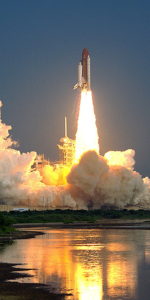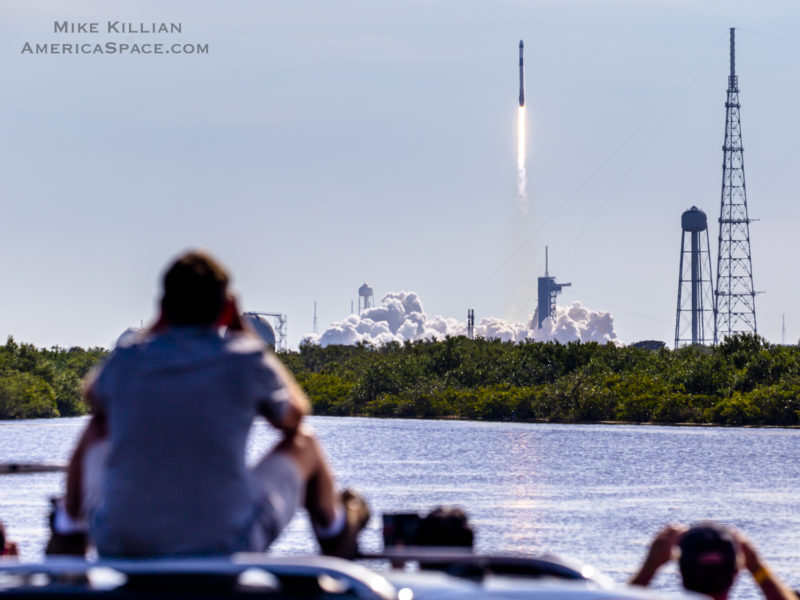
Only days after it triumphantly launched and brought the life-leading B1049 core to a smooth touchdown on the Autonomous Spaceport Drone Ship (ASDS), SpaceX is primed for its second Falcon 9 mission of March as early as Tuesday evening.
Liftoff of the veteran B1058 booster—which first saw service to lift NASA astronauts Doug Hurley and Bob Behnken to orbit aboard Dragon Endeavour last May—is scheduled to occur from storied Space Launch Complex (SLC)-40 at Cape Canaveral Space Force Station, Fla., as soon as 9:55 p.m. EST Tuesday. Laden with a 60-strong batch of Starlink low-orbiting internet communications satellites, this will be B1058’s sixth launch, positioning it as only the fourth member of SpaceX’s fleet to log so many missions.
When she lofted Dragon Endeavour from historic Pad 39A at the Kennedy Space Center (KSC), last 30 May, B1058 helped realize the promise of the Commercial Crew Program to return U.S. astronauts to space, atop U.S. rockets, and from U.S. soil, for the first time since the end of the Space Shuttle era.
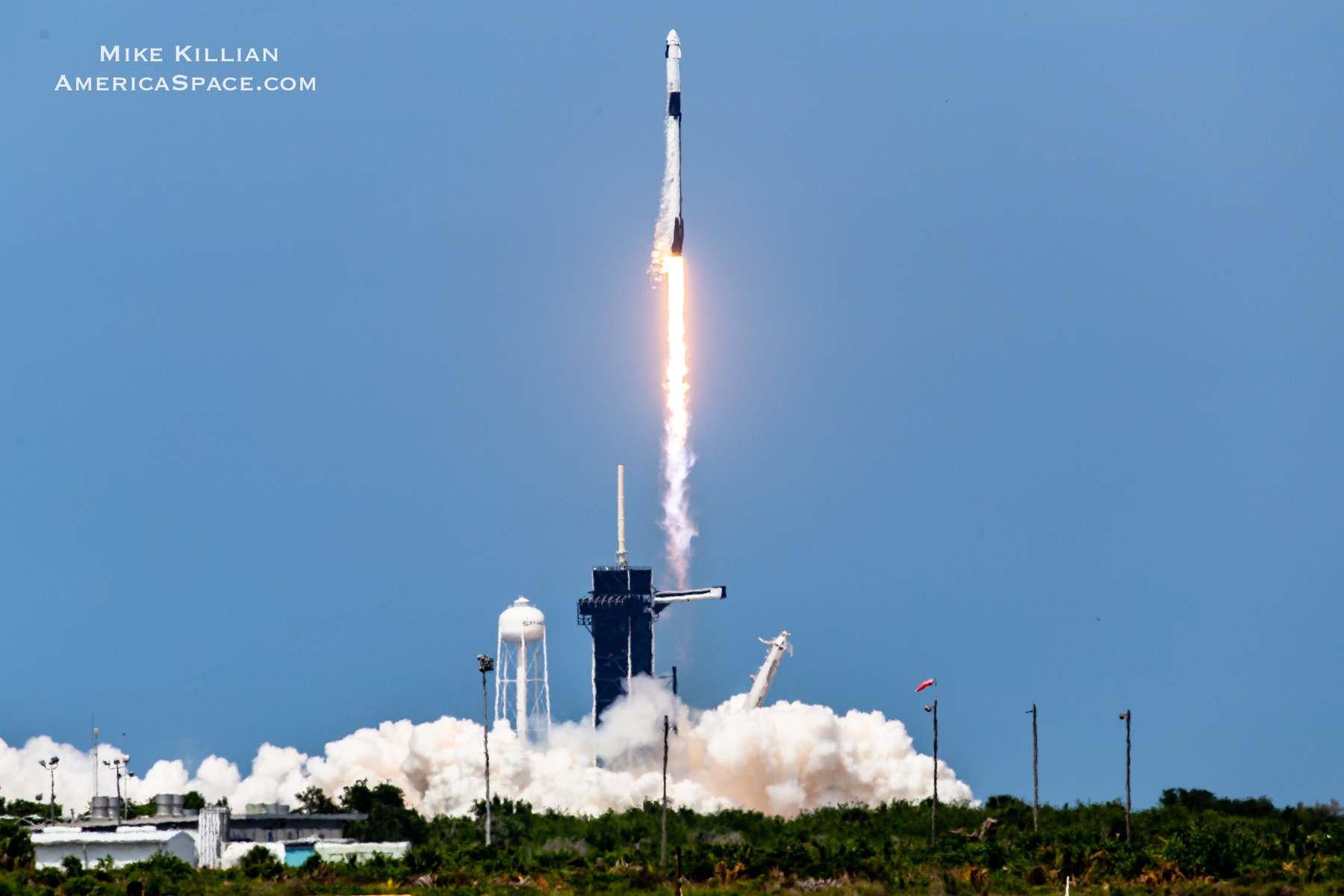
Following a smooth launch and safe return to the bobbing deck of the ASDS “Of Course I Still Love You”, B1058 was rapidly reprocessed for a second liftoff—this time from SLC-40, further downrange at Cape Canaveral Space Force Station—on 20 July. This second mission saw her provide the first-stage muscle to lift South Korea’s ANASIS-II military communications satellite to space, before alighting perfectly onto the ASDS “Just Read the Instructions”.
In launching twice within a span of only 51 days, B1058 also eclipsed an almost 35-year-old record for the shortest interval between two missions by a single reusable, orbital-class booster. She neatly broke the 54-day record set by shuttle Atlantis between the launch of her STS-51J mission on 3 October 1985 and the launch of her STS-61B mission less than eight weeks later on the night of 26 November.
Third and fourth flights followed in rapid-fire succession. B1058 deployed 60 Starlink low-orbiting internet communications satellites into space on the morning of 6 October—helping to break the curse of a delay-prone “Scrubtober” on the Space Coast—and in doing so set a new empirical record for the shortest interval (only 129 days) between three launches by the same orbital-class booster.
On 6 December, she recorded the 100th fully-successful mission by a member of the Falcon 9 rocket family when she boosted the CRS-21 Dragon cargo ship to the space station. This flight also set a record for the shortest interval (only 190 days) between four flights by the same booster.
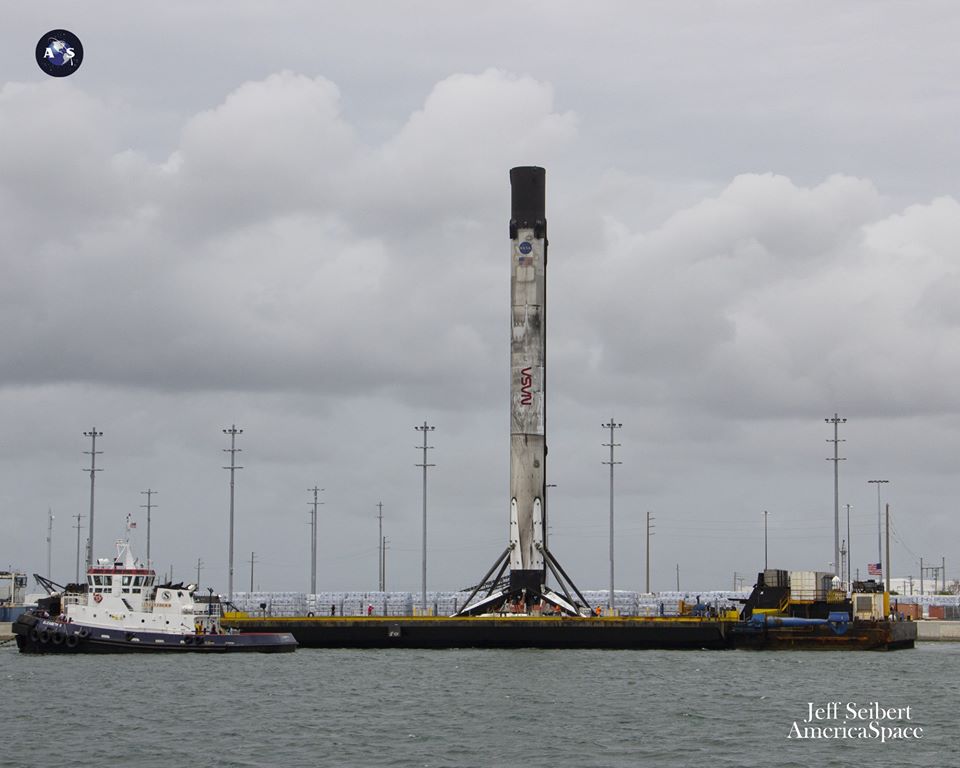
More recently, on 24 January, B1058 became only the fifth Falcon 9 core to log a fifth mission and just the fourth—when one discounts the final moments of last March’s voyage of her ill-fated sister B1048—to return to an intact landing after so many flights.
And in flying so often, she secured yet another record of 239 days between her first five missions. If B1058 launches as planned on Tuesday night, she will have flown six times in 283 days and an on-point ASDS landing will make her only the third Falcon 9 to return safely from so many missions, after last month’s untimely end-of-flight demise of sister B1059.
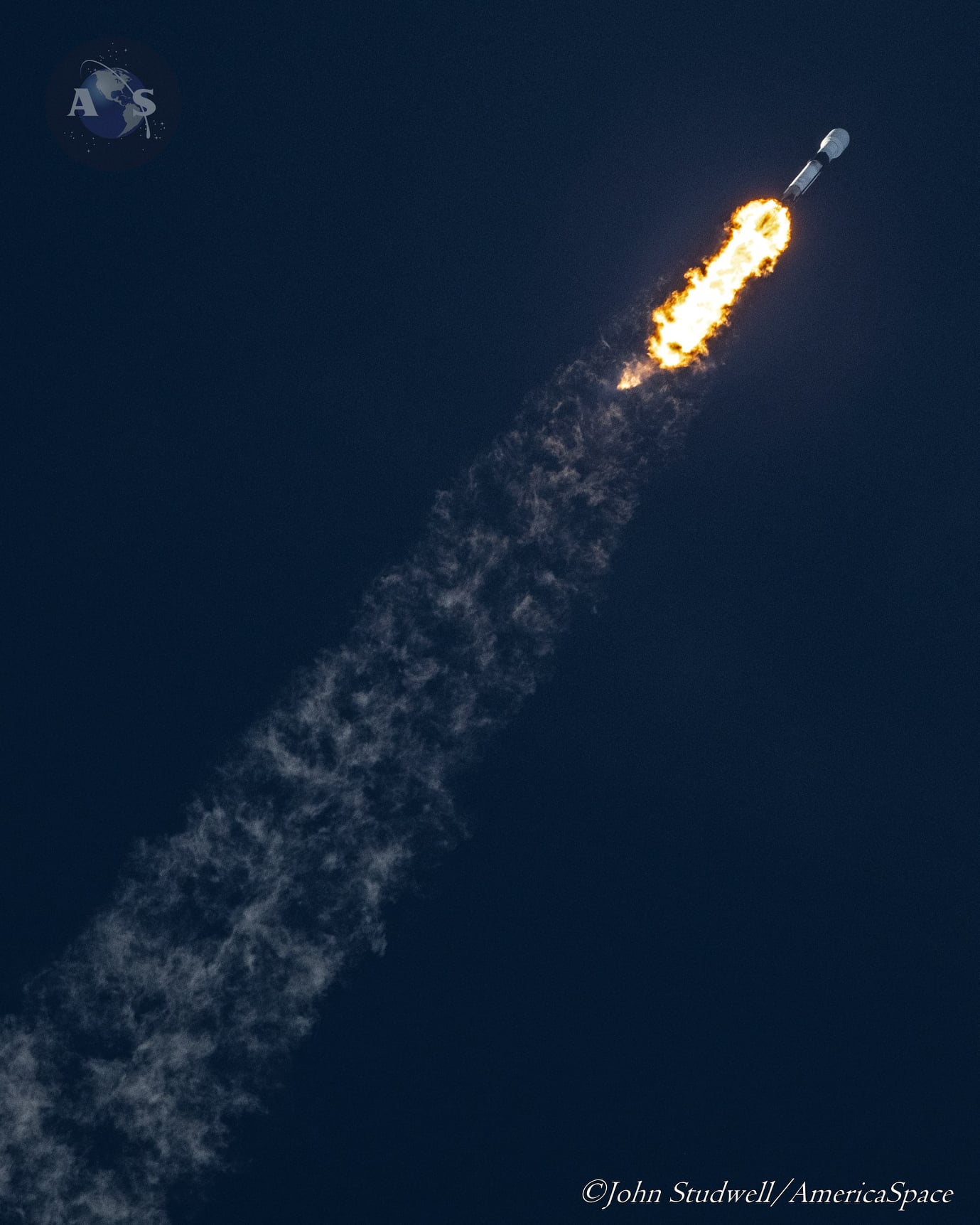
Weather on both Tuesday night and the backup opportunity on Wednesday is predicted to be highly favorable, with a 90-percent likelihood of acceptable conditions deteriorating slightly to 80 percent as the week progresses.
“A low-pressure area currently in the eastern Gulf of Mexico will transit southern Florida today, bringing widespread clouds, showers and gusty winds,” noted the 45th Weather Squadron at Patrick Space Force Base in its L-3 update on Saturday. “The system will continue to move east into the Atlantic on Sunday, taking much of the unsettled weather with it, as high pressure builds in Florida.
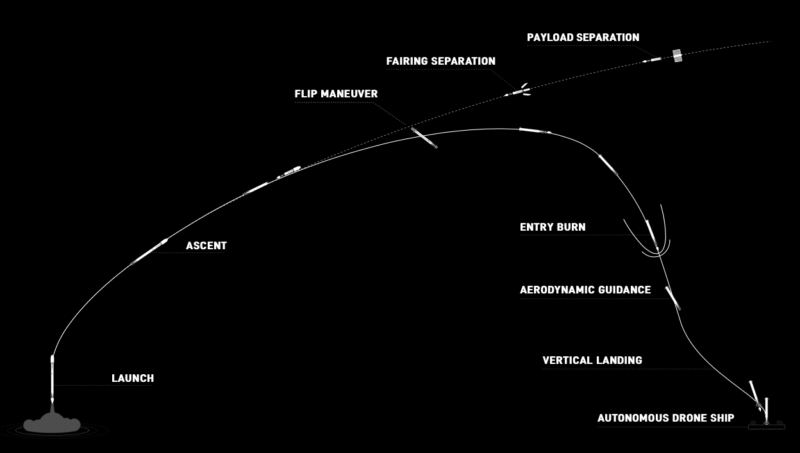
“On Monday, winds will diminish and become more northeasterly, as the high-pressure area moves off the Mid-Atlantic coast. Expect much the same conditions on Tuesday as the winds become easterly, increasing cloud cover slightly with the onshore flow.” Primary weather concerns for both Tuesday and Wednesday are a possible infringement of the Cumulus Cloud Rule and Liftoff Winds Rule.
In readiness for Tuesday’s opening launch attempt, the ASDS “Just Read the Instructions” departed Port Canaveral last Friday, drawn out to sea by the tug Finn Falgout towards a position about 390 miles (630 km) offshore in the Atlantic Ocean.

It remains to be seen if B1058 will be put through a Static Fire Test of its nine Merlin 1D+ first-stage engines, although—in the wake of several last-second launch aborts and last month’s engine issue which doomed the final moments of B1059’s final voyage—SpaceX has tended to return to this pre-launch regime of testing once more.
Riding atop B1058 for her sixth mission will be another 60 Starlinks, which should bring to just over 1,200 the total number of these low-orbiting internet communications satellites placed into space since May 2019.




